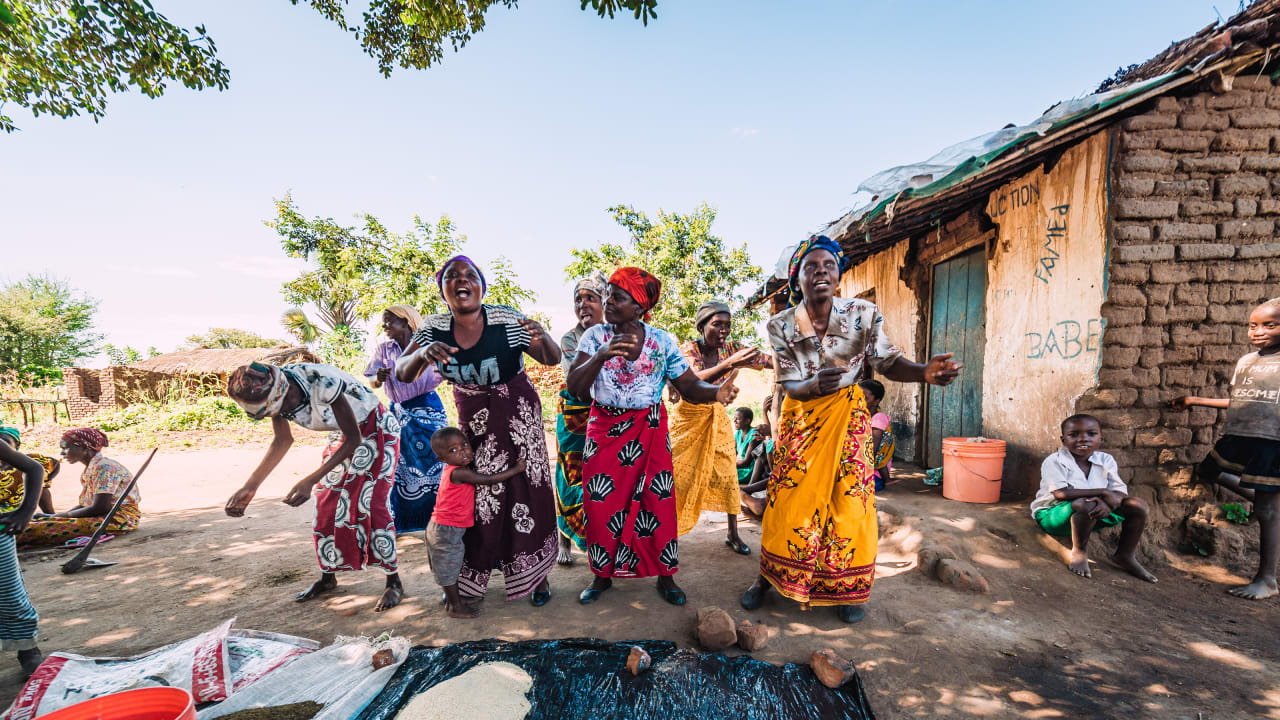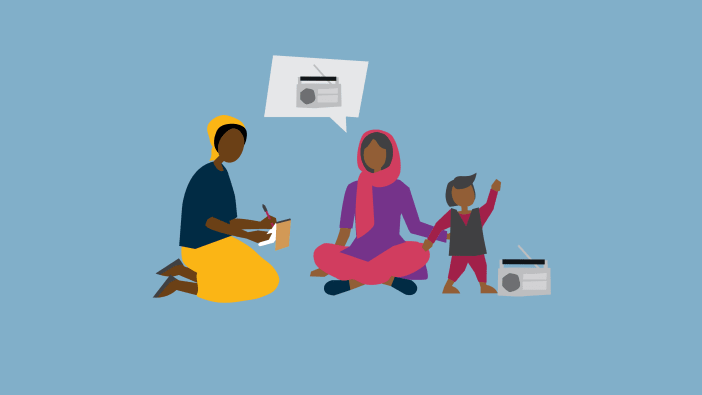by Tim Prentki and Claire Lacey
Theatre can break through language and cultural barriers and is an extremely useful communication tool.
- Theatre does not require literacy skills or clever speaking to be effective.
- Theatre communicates with the whole person – not just with our thinking and reason. It appeals to our emotions, passions and prejudices. It can challenge us to face up to aspects of our lives that we try to ignore.
- It is an entertaining way of sharing information. Both adults and children learn best when they are interested.
- Theatre does not only use words. It can also communicate effectively using mime, dance and images.
Theatre has been used in community development in various ways:
- Educational propaganda
Governments and NGOs may use theatre to deliver messages in a ‘top-down’ approach. For example, a development agency or community group may use a play encouraging the use of solar cookers as a means of preventing the removal of trees. Although this can be an effective way of passing on information about an issue, it will not be effective if it ignores the local situation, culture and the knowledge and experience of the audience.
- Encouraging participation
Theatre for development can encourage active participation from people whose voices are not normally heard in the community. Stories are used to help people express their understanding of what happens to them in their daily lives. These stories can encourage real participation. Theatre for development turns private, individual stories into public, collective dramas.
- Advocacy Theatre
Advocacy Theatre can provide a way for the audience to participate in the issues raised. It can have a much greater impact than other forms of advocacy. Theatre can challenge people who may be able to respond to and take action about the issues raised.
- Therapy Drama
Therapy Drama can be used as therapy to help people deal with trauma and emotional problems. This usually requires special training and understanding.
Helping people develop their own stories
Stories can be used to help individuals and communities make sense of their place in the world. Outside facilitators planning to use theatre with a community need to spend time building up relation-ships with individuals. They need to build trust and confidence with people, by showing humility and interest and gaining understanding of local issues.
Finding an interesting way of encouraging people to talk about themselves is often a good start. Participants could be asked to bring to a meeting an object of personal value to them. Then they could be asked, in turn, to share the histories of those objects. People could also be asked to sing favourite songs.
Sharing stories about the past requires trust and openness. Facilitators can offer their own story first, and then encourage other people to do the same. By sharing a variety of stories, the most important aspects of the community will gradually emerge.
Developing stories
There are many techniques for this process. We might begin simply by getting people in pairs to tell each other stories. Then the listener can retell the story they just heard to another person.
Or participants could pass one story round a circle, with each person making slight changes each time the story is retold.
The following activity could also be used to help a group make up a story…
- Divide participants into two groups and form two circles – an inner and an outer, with each inner participant facing one outer participant.
- Ask the inner circle to begin a story. It helps to provide them with a suggestion. For example, ‘Tell a story about a secret box.’ Each person then makes up a story and tells it to their outer circle partner for exactly one minute.
- Ask the outer circle to move round one place and then pass on the story they have just heard to their new inner circle partners. This time, however, they must include something new in the story – for example, ‘a leopard’.
- Again, time the story telling for exactly one minute. (Suggest words to stimulate thinking about specific topics such as bullying, violence and gender. However, it is important to add silly ideas too, to ensure a sense of light-heartedness.)
- Ask the outer circle to move round one place again to the next inner circle person who will repeat to them the story they have just heard – again including ‘a secret box’ and ‘a leopard’ and one more new idea.
- Continue this process of moving the outer participants on one place each time. Participants will alternately listen to a story and then pass it on to another person – always adding one new idea. Stop when all outer participants have partnered with all inner circle participants. Stories will become very muddled and confused, but this is all part of the fun!
By the end of the exercise, each person will have a unique final story which includes input from each participant. Now divide the participants into several small groups. Ask each of them to tell their final stories to each other and decide which story they prefer.
These stories can then be told to the other groups. Decisions about what is included in the stories will reveal a great deal about the group as a whole – how they feel, what they think and believe, and how they relate to others in the community.
Turning stories into plays
The quality of the performance is likely to relate to the degree of ownership that participants feel towards the material. Participants should therefore agree together which story to choose to develop into a play. The facilitator may need to highlight practical issues concerning what is possible to act out! They may also be able to combine parts of discarded stories into the chosen story.
Exploring issues
Many sensitive issues, which may be too delicate or dangerous to discuss openly, can be explored through the use of drama. Playing the role of a different character allows people to say things that would not be possible in their own voices. Humour can sometimes help to share difficult or sensitive issues in ways that do not cause offence.
People do not have to base theatre around their present situation. Other situations or different cultural settings can be imagined.
Theatre can sometimes provide several alternatives in the story with their resulting consequences, rather than providing any one definite solution. This can encourage people to think through the alternatives and consider how they, personally, would respond.
Give careful thought about how to involve the audience. Could they be involved:
- as other actors?
- as participants in the debate?
- through follow-up activities and discussion?
Sustainability in the use of theatre is very important, once outside facilitators leave. Wherever possible, people within the community should be identified who can be trained in facilitation skills to enable the process to be continued by the community without outside help.
Tim Prentki is Professor of Theatre for Development at King Alfred’s College, Winchester, UK. He has recently co-authored a book, Popular Theatre in Political Culture (see page 14). E-mail: [email protected]
Claire Lacey is a nurse, at present studying theatre for development at King Alfred’s College, with a particular interest in using theatre to help combat HIV/AIDS. E-mail: [email protected]
Glossary
- drama the experience of communicating by actors
- play a written script on which a drama is based
- role play the method through which ordinary people take part in drama
- theatre the communication between actors and audience; also a place where plays are performed









